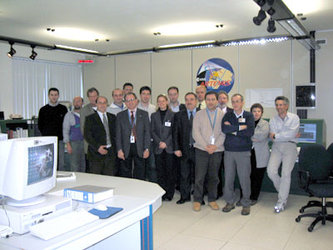Artemis
Equipped with a suite of advanced communication payloads, ESA's Advanced Relay and TEchnology MISsion (Artemis) satellite has scored a long series of satcom firsts still in use today and precursors to new ESA programmes like the European Data Relay System.
Although Artemis has officially completed its mission, the telecommunications satellite still has plenty to offer. Reaching its working orbit 11 years ago after an arduous journey, Artemis continues to communicate with Earth. ESA transferred ownership of the satellite to Avanti Communications (UK) in 2014.
Artemis created the first laser data link between satellites in different orbits. It was the first telecom satellite to be extensively reprogrammed in orbit, and it was the first to power its way to geostationary orbit, 36 000 km up, with ion thrusters after surviving the longest-ever drift to its destination. Artemis also provided data relay for Envisat, the largest Earth observation satellite ever built.
Today, Artemis provides links for all of ESA’s Automated Transfer Vehicle (ATV) missions to the International Space Station, from launcher separation to docking, deorbiting and, finally, reentry. Its navigation payload is a critical element for the European Geostationary Overlay System (EGNOS), which enhances navigation services data for aircraft and ships. Artemis has been broadcasting the EGNOS signals since 2003 and supports the EGNOS open service and the safety-of-life service.
Artemis’ list of accomplishments includes establishing two-way links in 2006 and 2007 with an aircraft flying over the southern coast of France, receiving video footage at 50 Mbits per second.
Artemis also provided a two-way link with an unmanned drone dropped from an altitude of 21 km off the coast of Sardinia in 2007. Telemetry and commands were exchanged while the drone was flying in excess of Mach 1.





